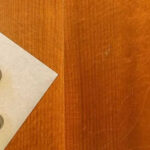Eric Clapton, a name synonymous with blues-rock guitar mastery, is celebrated for countless iconic performances. Yet, one of his most revered guitar moments isn’t on a Cream or Derek and the Dominos record, but rather as a guest musician on The Beatles’ “While My Guitar Gently Weeps.” This track, penned by George Harrison for the White Album, features Clapton’s distinct guitar voice, albeit one he intentionally tried to disguise. For years, the story of Clapton’s contribution remained a somewhat hushed secret among music aficionados. Let’s delve into the isolated guitar track to truly appreciate Clapton’s nuanced and emotive performance on this Beatles classic.
Clapton’s Reluctant Cameo on a Beatles Track
The circumstances surrounding Eric Clapton’s appearance on a Beatles record were quite unique. Close friends with George Harrison, Clapton was invited to contribute to “While My Guitar Gently Weeps” by Harrison himself. However, as Ken Scott, the engineer for the session, recounted in Abbey Road To Ziggy Stardust, Clapton was initially hesitant. His concern was rooted in the unspoken rule: “no one plays on Beatle records.” Harrison, determined to have Clapton’s touch on his song, reassured him that the band would be receptive.
According to Scott, Clapton’s desire to distance himself from his signature sound was paramount. He reportedly insisted on using the gear already present in Abbey Road Studios, rather than bringing his own famed equipment. The exact equipment remains a mystery, lost to the annals of studio history. This choice was deliberate, aiming to blend seamlessly into the Beatles’ sonic landscape, rather than imposing Clapton’s well-known guitar identity.
The Mystery of Clapton’s Guitar Gear and Tone
The quest to identify the exact guitar and amplifier Clapton employed for this session has long intrigued guitar enthusiasts. Ken Scott’s recollection highlights Clapton’s intention to sound “as far away from Eric Clapton as he could.” This desire extended beyond equipment choice and into the mixing process itself.
To further manipulate the guitar tone and make it sound “more Beatley,” the engineers employed Automatic Double Tracking (ADT) in a unique way. Chris Thomas, George Martin’s assistant, was tasked with manually manipulating the varispeed of the tape machine during mixing. This technique induced a distinctive warbling effect on both the lead guitar and organ tracks, which were, surprisingly, combined on the same track. Thomas himself admitted finding this process “stupid” and “bloody boring,” viewing it as a gimmick to mask Clapton’s identity. This unusual mixing technique ultimately contributed to the song’s unique and somewhat psychedelic guitar textures.
A Loose and Improvised Guitar Solo
Listening to Clapton’s isolated guitar track reveals a performance characterized by its looseness and improvisational feel. It sounds remarkably like a single take, capturing the raw and spontaneous nature of his playing. Throughout the track, Clapton effortlessly transitions between rhythm and lead guitar passages, showcasing his versatility within a single performance.
What’s striking is the apparent lack of rigid structure. Clapton’s solo doesn’t sound meticulously planned or overly polished. Instead, it embodies a sense of exploration, as if he’s discovering the melodic contours in real-time. This improvisational approach is punctuated by occasional “flubs,” particularly noticeable in the B section and during transitions between musical sections. These minor imperfections, far from detracting from the performance, actually enhance its organic and human quality. They offer a glimpse into the spontaneity and vulnerability of a legendary musician crafting a solo in the moment.
The Rhythmic Toe Taps: A Detail of Performance
An intriguing detail audible in the isolated track is the distinct sound of toe taps. These rhythmic taps, likely Clapton keeping time as he played, offer a subtle but fascinating insight into his performance process. They underscore the live, in-studio nature of the recording and add another layer of intimacy to the listening experience. It’s a small human element that connects the listener directly to the musician in the act of creation.
Conclusion: An Unmistakable Touch of Genius
Eric Clapton’s guitar work on “While My Guitar Gently Weeps” stands as a testament to his adaptability and musical genius. Despite his efforts to sound “un-Clapton-like,” his signature emotive phrasing and bluesy sensibility subtly shine through. The isolated track allows for an unprecedented appreciation of his contribution – a loose, improvisational, and ultimately iconic solo that elevated an already exceptional Beatles song to new heights. It remains a fascinating case study in studio collaboration, sonic experimentation, and the enduring power of a masterful guitar performance.

